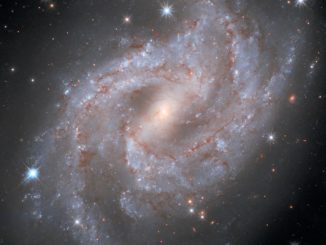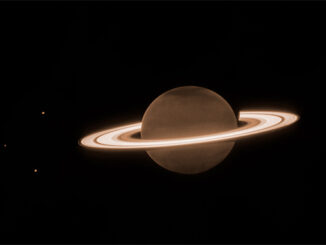
Eleven thousand years ago, a massive star exploded, blowing its outer layers into surrounding space as its core collapsed, cooking up the heavy elements needed for future stars, planets – and possibly life – in the process. Light from Cassiopeia A – Cas A – reached Earth in the late 17th Century and the supernova remnant now spans 10 light years.
Already the subject of intense study, a new image from the James Webb Space Telescope shows the nebula with never-before-seen infrared subtleties, turning an already magnificent object into a mesmerising spectacle.
“Compared to previous infrared images, we see incredible detail that we haven’t been able to access before,” said Tea Temim, a co-investigator at Princeton University.
On the expanding bubble’s left-side perimeter, dust glows in orange and red hues where the ejected material is slamming into surrounding circumstellar debris.
The source of that surrounding dust is an ongoing subject of study, and Webb’s infrared vision may help astronomers determine the role supernovae played in creating the high dust concentrations seen in early galaxies.
While supernovae create the heavy elements that are the building blocks of that cosmic dust, it’s not clear how much survives the turmoil of an individual blast to reach interstellar space, seeding it with the material needed for future stars, planets and even life.
“Cas A represents our best opportunity to look at the debris field of an exploded star and run a kind of stellar autopsy to understand what type of star was there beforehand and how that star exploded,” said Purdue University’s Danny Milisavljevic, who leads the team studying Cas A with Webb.
“By understanding the process of exploding stars, we are reading our own origin story,” Milisavljevic said.
The new Webb image shows material from the doomed star itself in knotted filaments of bright reddish pink, indicating emissions from heavy elements like oxygen, argon and neon.
As for the greenish swirl toward the interior of Cas A, “we’ve nicknamed it the ‘Green Monster’ in honour of Fenway Park,” said Milisavljevic, referring to an American baseball field in Boston. “If you look closely, you’ll notice that it’s pockmarked with what look like mini-bubbles. The shape and complexity are unexpected and challenging to understand.”
He called Webb “an incredible achievement.”
“I feel fortunate to be among the first scientists to test its unrivaled power to explore the universe,” Milisavljevic. “I am going to spend the rest of my career trying to understand what’s in this data set.”



